I got Svbony UHC 1.25″ astronomical filter for test. The purpose of the UHC (Ultra High Conrtast) filter is to improve the visibility of gas nebulae. The “real” UHC filter should only pass H-beta lines (486.1 nm) and an OIII doublet (495.9 and 500.7) nm). The UHC filter is not designed to observe objects of stellar nature (galaxies, star clusters), as well as the Moon and planets.

The declared graph shows that the filter has too wide a passband for the UHC filter. This is typical of cheap UHC filters. It also transmits light in the red region, however, it can be useful for shooting hydrogen nebulae in urban light conditions.
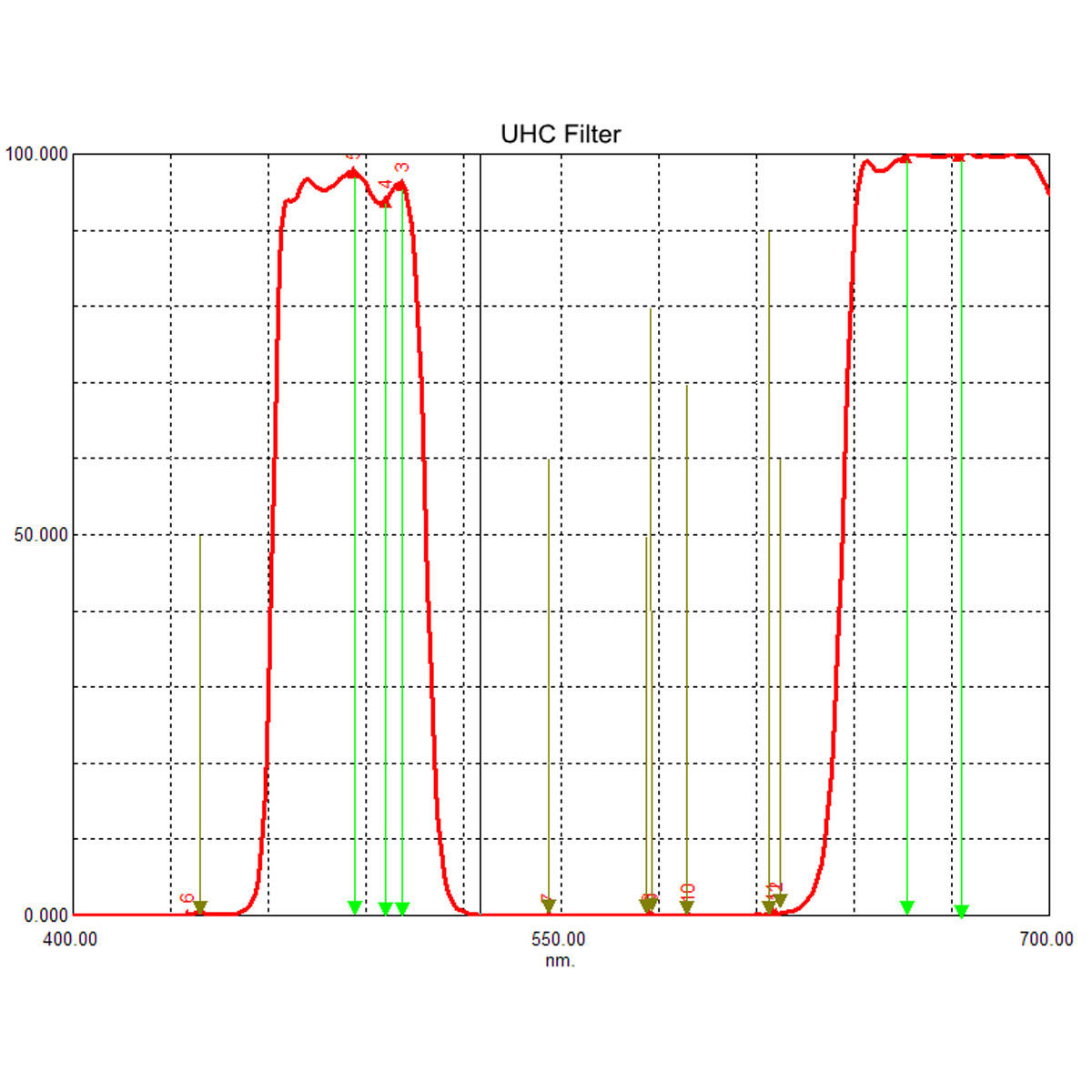
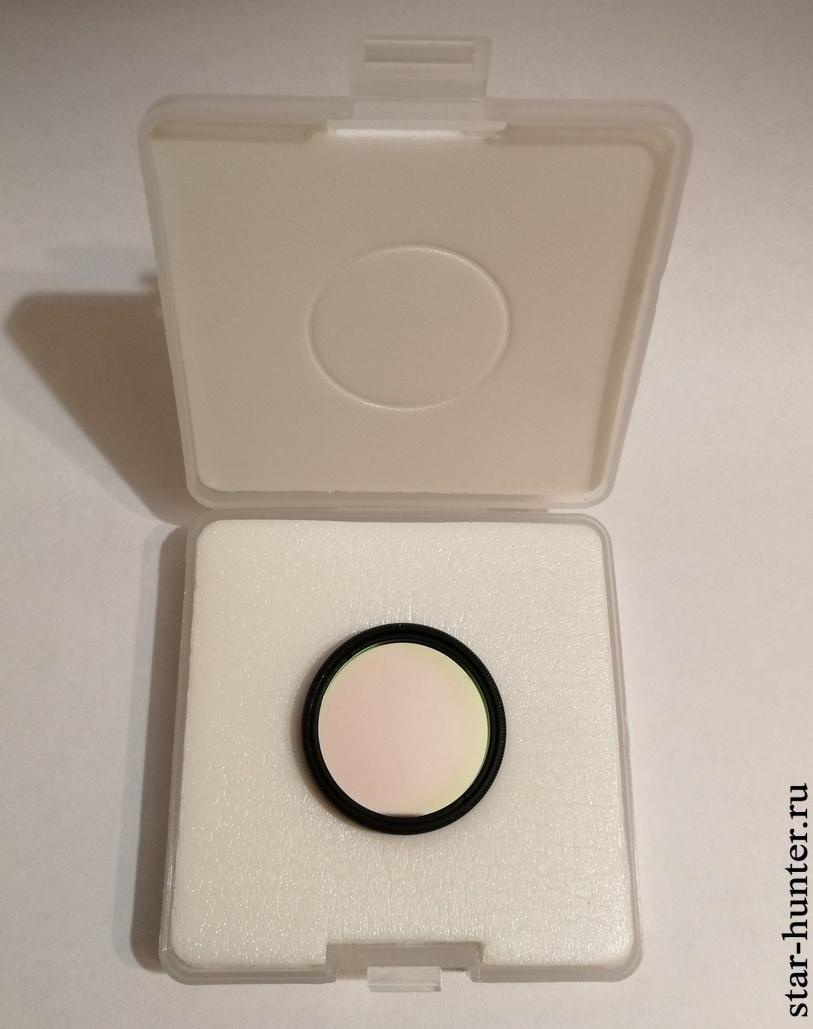
The surface of the filter is mirrored, but in the light it looks green with a purple rim on the edge. When tilted due to a shift in the bandwidth, the color turns purple – this is normal. The surface is clean, without scratches, prints or defects.

Also, with a simple spectroscope and a Canon 550Da camera, the following spectra were obtained.
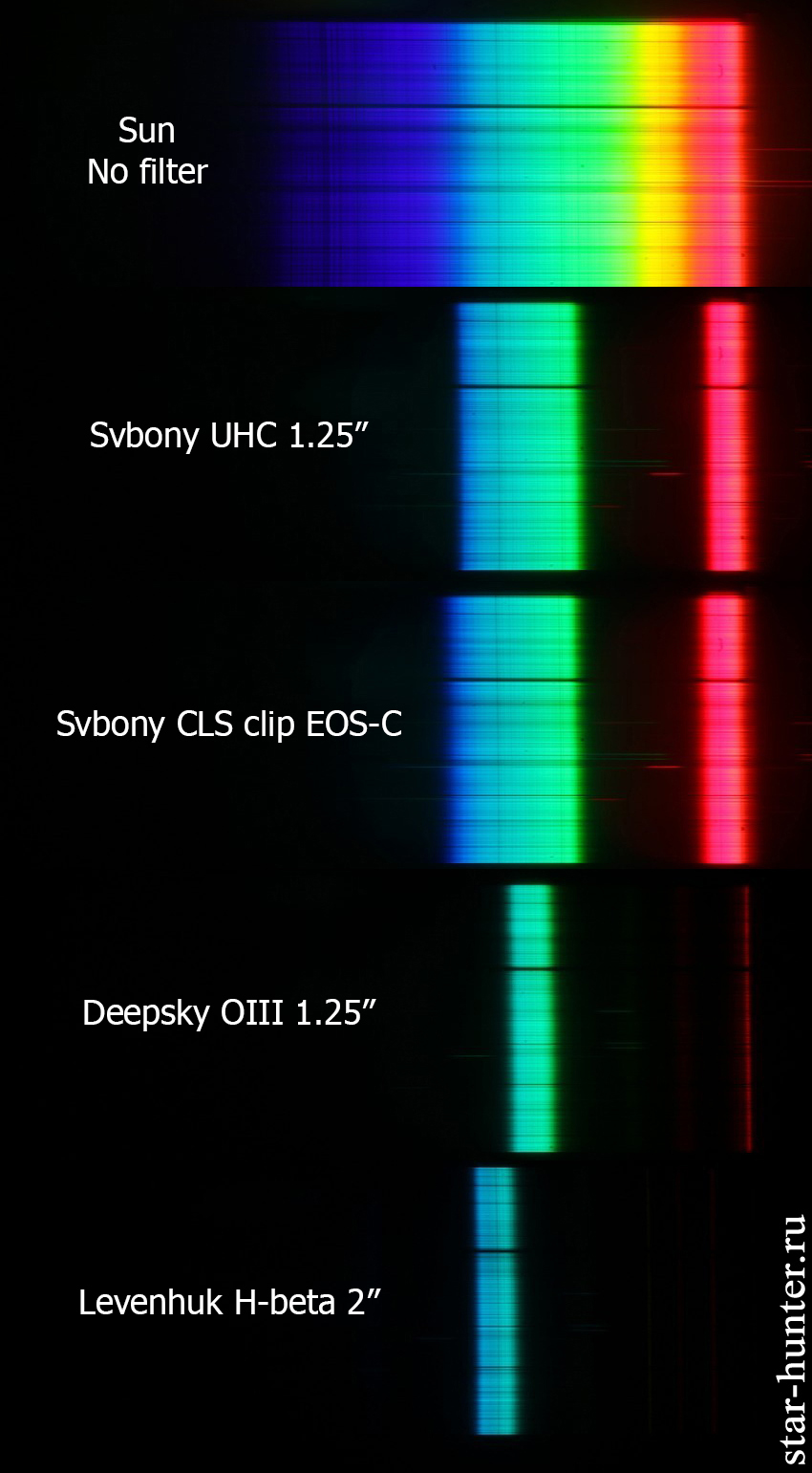
By the spectrum, Svbony’s CLS is slightly wider than UHC, and the bandwidth is shifted to the blue region. Both filters pass H-beta, OIII and H-alpha.
City sky photo test (Canon EF 402.8 STM lens, Canon 550Da camera):
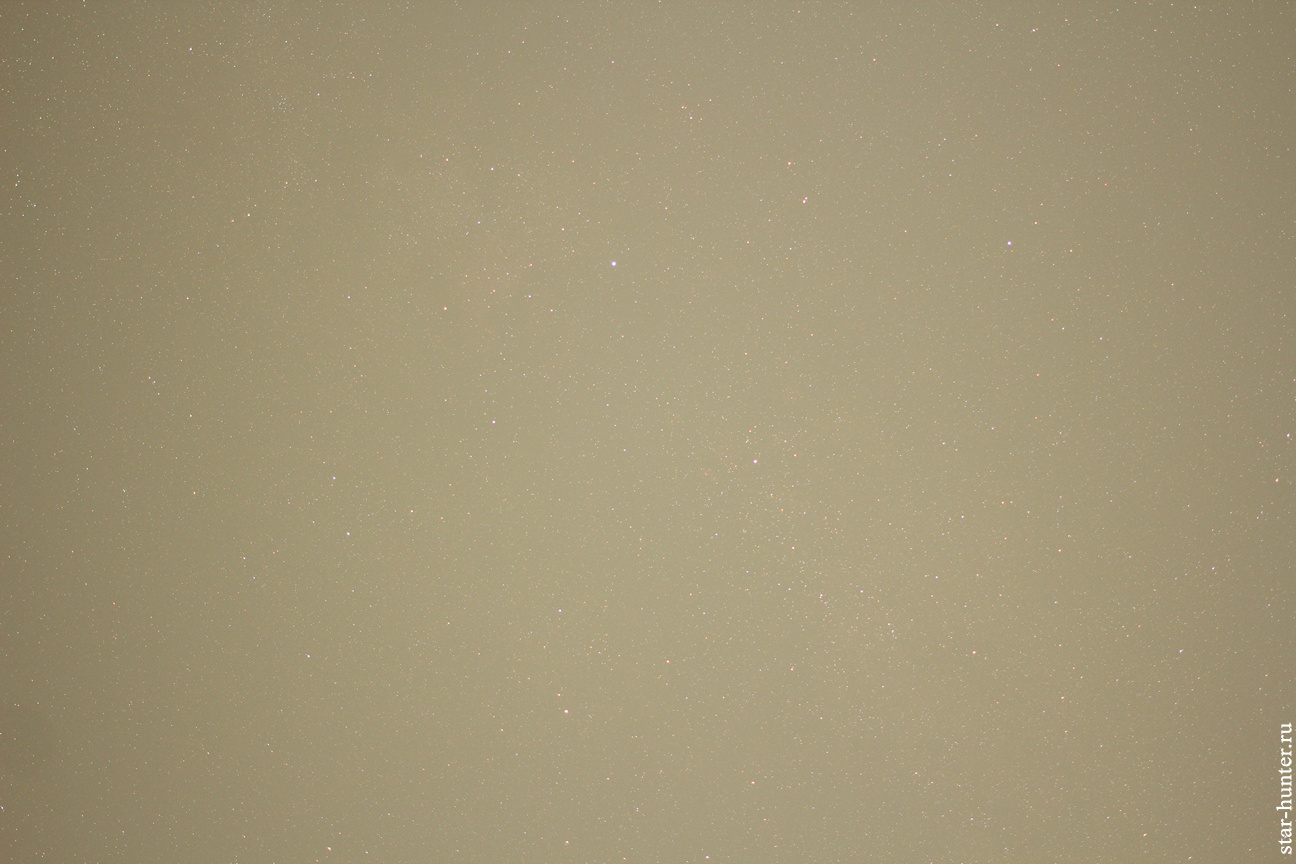
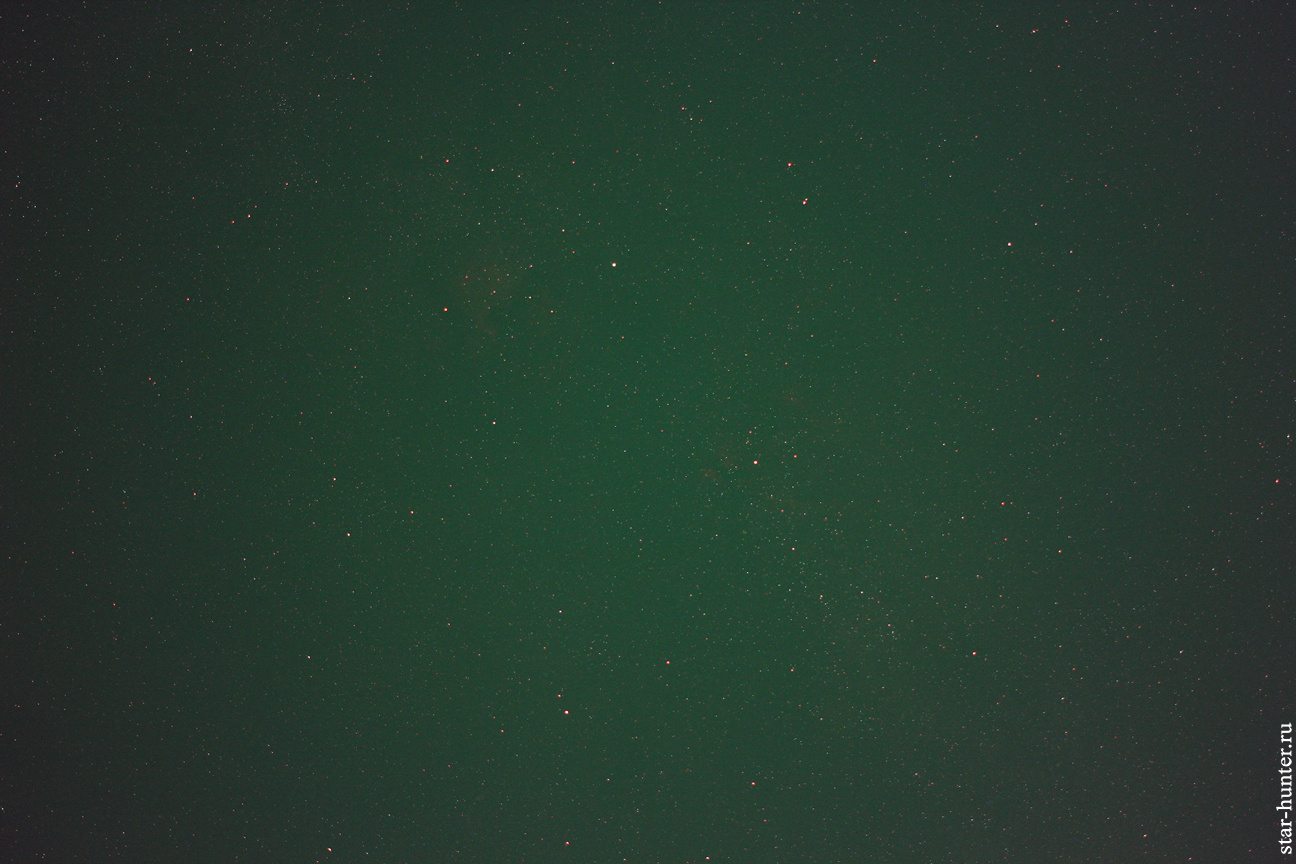
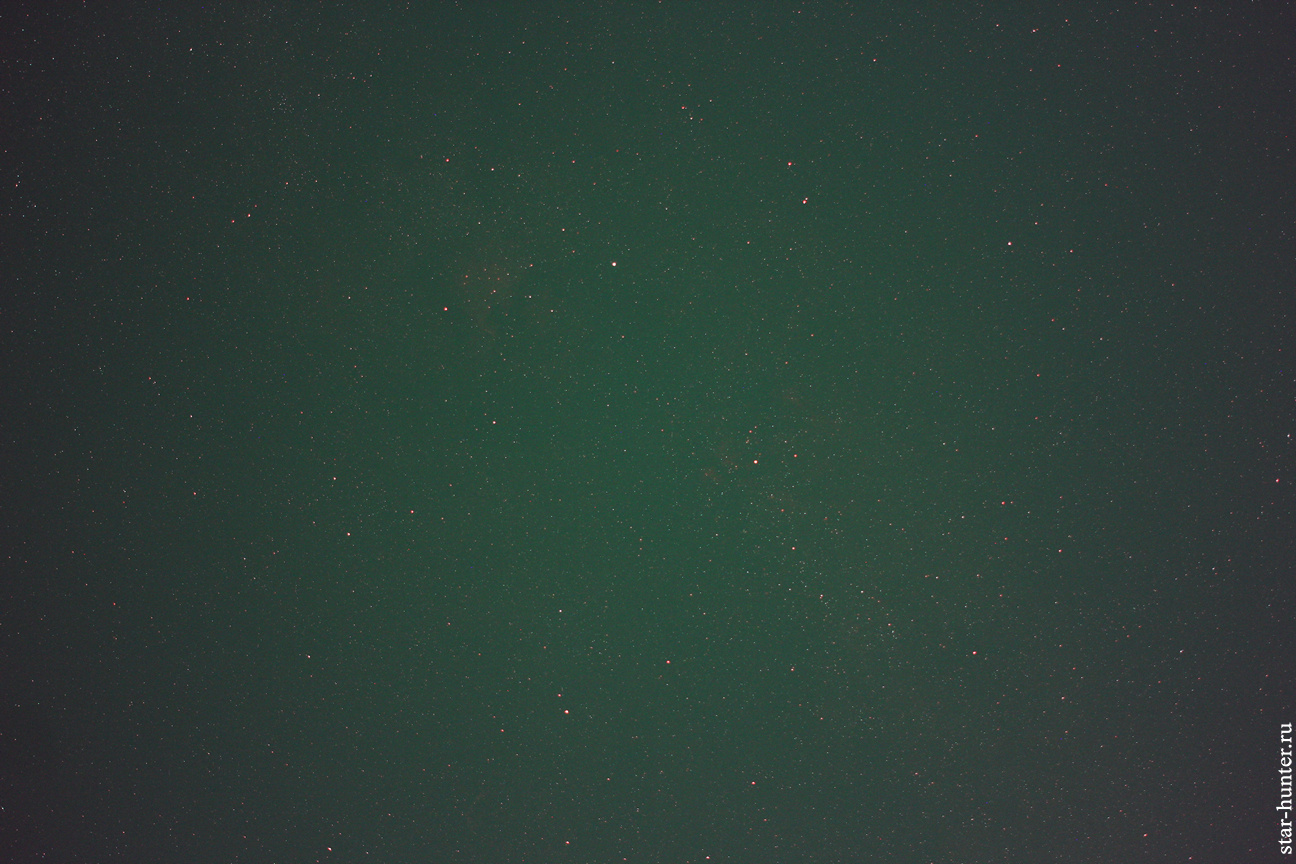
The difference is small, but still there.
Testing in the suburban sky was carried out using the Celestron AstroFi 5″ telescope with the Sky-Watcher Pronto mount. The test object was the M 27 nebula in Vulpecula. In addition to Svbony UHC, the budget filter DeepSky OIII 1.25″ also participated. Svbony UHC has improved the visibility of the nebula, highlighting it against the sky. With the OIII filter, the background became noticeably darker, symmetrical “ears” appeared at the nebula. Without filters, the nebula was visible worse.
SUMMARY: the filter works, but in fact it is not a real UHC. Yes, with visual observations, the effect from it will be, but not as noticeable as from the OIII or more narrow-band UHC filter. Svbony UHC can be successfully used for photographing gas nebulae in urban light conditions, or when observing through telescopes or binoculars. I recommend painting the magenta rim with a black marker for CDs.